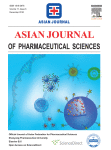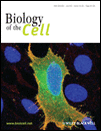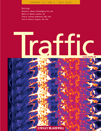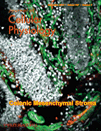
Journal of Extracellular Vesicles
Scope & Guideline
Advancing Knowledge in Cell Biology and Histology
Introduction
Aims and Scopes
- Characterization of Extracellular Vesicles:
The journal emphasizes the detailed characterization of EVs, including their physical, chemical, and biological properties, using advanced techniques such as proteomics, genomics, and lipidomics. - Biological Functions of Extracellular Vesicles:
Research articles explore the various biological functions of EVs, including their roles in intercellular communication, immune response modulation, and contribution to disease pathology. - Therapeutic Applications of Extracellular Vesicles:
The journal covers studies on the therapeutic potential of EVs, including their use as drug delivery systems, in regenerative medicine, and in the treatment of various diseases. - Emerging Technologies for EV Research:
Special attention is given to innovative technologies and methodologies in EV research, such as novel isolation techniques and analytical methods for EV characterization. - Clinical and Translational Research:
The journal promotes clinical studies and translational research that investigate the potential of EVs as biomarkers for disease diagnosis, prognosis, and therapeutic targets.
Trending and Emerging
- Immunomodulatory Roles of Extracellular Vesicles:
Recent studies increasingly focus on how EVs influence immune responses, including their roles in cancer immunotherapy and autoimmune diseases, highlighting their potential as therapeutic agents. - Extracellular Vesicles in Disease Diagnostics and Prognostics:
There is a growing trend of using EVs as biomarkers for various diseases, particularly in cancer and infectious diseases, which emphasizes their potential in clinical diagnostics. - Engineering and Functionalization of Extracellular Vesicles:
Research is trending towards the engineering of EVs for targeted drug delivery and therapeutic applications, showcasing advancements in synthetic biology and nanotechnology. - Role of Extracellular Vesicles in Microbiota-Host Interactions:
Emerging studies are exploring the interactions between microbial extracellular vesicles and host cells, indicating a novel area of research that connects microbiome studies with EV biology. - Application of Advanced Analytical Techniques:
The use of cutting-edge techniques, such as single-particle analysis and high-throughput sequencing, is on the rise, allowing for more comprehensive studies of EV composition and function.
Declining or Waning
- Basic Biogenesis Mechanisms:
While the fundamental mechanisms of EV biogenesis were once a major focus, recent research has shifted towards exploring specific applications and therapeutic potentials, leading to a decline in studies solely dedicated to basic biogenesis. - Generalized EV Isolation Techniques:
There has been a move away from generic isolation methods for EVs towards more refined and specific techniques that enhance purity and yield, leading to fewer publications on traditional isolation methods. - Non-specific Applications of EVs:
Earlier research often explored a broad range of potential applications for EVs without specific context. Currently, the focus has shifted to more targeted applications, resulting in fewer studies discussing non-specific uses.
Similar Journals

Biomedical Journal
Advancing Biomedical FrontiersThe Biomedical Journal, published by ELSEVIER, serves as a premier platform for disseminating groundbreaking research in the field of medicine, specifically within the Q1 category of Medicine (Miscellaneous). With the ISSN 2319-4170 and E-ISSN 2320-2890, this Open Access journal has been committed to advancing biomedical science since its inception in 2002. With an impressive Scopus rank of #31 out of 636 in General Medicine and a notable placement in the 95th percentile, the journal provides valuable insights and rigorous studies that contribute significantly to the medical community. Based in the Netherlands at RADARWEG 29, 1043 NX AMSTERDAM, the journal is highly regarded for its timely and diverse range of articles, fostering collaboration and innovation amidst researchers, professionals, and students alike. The ongoing engagement in the journal's converged years from 2012 to 2024 underscores its commitment to keeping pace with the evolving landscape of biomedical research, making it an essential resource for those seeking to stay at the forefront of medical advancements.

FEBS LETTERS
Elevating Scientific Discourse in Biological FieldsFEBS LETTERS, published by Wiley, is a prestigious journal that has firmly established its place in the fields of biochemistry, biophysics, genetics, molecular biology, cell biology, and structural biology. With an esteemed history dating back to 1968, this journal continues to be a vital resource for researchers and professionals involved in the biological sciences. It boasts impressive quartile rankings, including Q1 statuses in several categories such as Biochemistry and Genetics, reflecting its high impact factor and significant contribution to scientific discourse. FEBS LETTERS provides a platform for innovative findings and critical reviews, fostering the exchange of knowledge and ideas within the scientific community. Although it operates under a subscription model, the journal ensures broad dissemination of groundbreaking research through its rigorous peer-review process. The vibrant discussions encouraged by articles published in FEBS LETTERS aim to inspire current and future generations of scientists to push the boundaries of biological understanding, making it an indispensable resource for anyone dedicated to advancing their knowledge in these dynamic fields.

Asian Journal of Pharmaceutical Sciences
Elevating the standards of pharmaceutical research worldwide.Asian Journal of Pharmaceutical Sciences is a prestigious open-access journal published by Shenyang Pharmaceutical University, dedicated to advancing research and developments in the field of pharmaceutical sciences. Since its inception in 2009, the journal has successfully converged a wealth of knowledge and innovation, demonstrating an impressive track record with its open access model adopted in 2013, ensuring global dissemination of crucial research findings. With an outstanding impact factor and consistently ranked in the Q1 category for both Pharmaceutical Science and Pharmacology in 2023, it ranks among the top journals in its field, as evidenced by its impressive Scopus rankings—4th out of 183 in Pharmaceutical Science and 10th out of 313 in Pharmacology, showcasing its high relevance and credibility (98th and 96th percentiles respectively). Researchers, professionals, and students can access a diverse array of articles that encompass groundbreaking studies, reviews, and reports, solidifying the journal's position as a vital resource for anyone engaged in pharmaceutical research. With its commitment to quality and accessibility, Asian Journal of Pharmaceutical Sciences plays an essential role in fostering innovation and collaboration within the global scientific community.

CYTOTECHNOLOGY
Transforming Knowledge: Your Gateway to Cutting-Edge Cytotechnological Research.CYTOTECHNOLOGY, an esteemed journal published by Springer, stands as a vital resource in the fields of Bioengineering, Biomedical Engineering, and Biotechnology. With an impact factor reflective of its solid position within academia, this journal encompasses a broad scope dedicated to the advancement of cytotechnological research and applications from its inception in 1987 through to its latest volumes in 2024. Based in the Netherlands, it is committed to providing researchers, professionals, and students with high-quality, peer-reviewed articles that contribute to the understanding and innovations in cytotechnology. Although currently not open access, CYTOTECHNOLOGY has garnered a commendable reputation, holding Q3 rankings in multiple categories, indicating its relevance and influence within the scientific community. Researchers are encouraged to submit their cutting-edge findings to share insights that can spark further advancements in this dynamic field.

BIOLOGY OF THE CELL
Innovating research at the core of life sciences.BIOLOGY OF THE CELL is a prominent academic journal published by Wiley, dedicated to advancing the field of cellular biology through the dissemination of innovative research and insights. With its ISSN (0248-4900) and E-ISSN (1768-322X), this journal has been a vital resource since its inception in 1981 and is set to continue its scholarly contributions until 2024. Positioned within the Q3 quartile in Cell Biology and Q2 in Medicine (miscellaneous) as of 2023, BIOLOGY OF THE CELL is recognized for its rigorous peer-review process and its commitment to high-quality publication in critical areas such as biochemistry, genetics, and molecular biology. Although the journal does not currently offer open access options, it remains accessible through the Wiley platform, ensuring that researchers, professionals, and students can benefit from its rich repository of knowledge. By linking fundamental cellular processes with broader medical implications, this journal serves as a critical platform for fostering dialogue and innovation in cellular research, making it an essential read for anyone engaged in the life sciences.

TRAFFIC
Bridging Theory and Practice in Life SciencesTRAFFIC is a distinguished academic journal published by Wiley, serving as a vital resource in the fields of Biochemistry, Cell Biology, Genetics, Molecular Biology, and Structural Biology. With an impressive growth trajectory since its inception in 2000, the journal has consistently maintained a Q1 category ranking in the latest 2023 evaluations, placing it amongst the top-tier publications in its fields. TRAFFIC is based in Denmark and has become a cornerstone for researchers and professionals seeking to explore the intricate dynamics of cellular transport and its implications across biological processes. Despite not being an open-access journal, TRAFFIC offers comprehensive access options, ensuring vital contributions to the scientific community are readily available. With a proven track record and substantial impact, as evidenced by its Scopus rankings—such as rank #11 in Structural Biology—TRAFFIC continues to be an essential platform for disseminating influential research and fostering academic discourse.

EXPERIMENTAL CELL RESEARCH
Connecting Researchers with Groundbreaking DiscoveriesEXPERIMENTAL CELL RESEARCH is a highly respected journal published by Elsevier Inc, specializing in the dynamic and ever-evolving field of Cell Biology. With an impact factor positioned in the Q2 quartile for 2023, it ranks at the 124th position out of 285 in the Scopus Ranks, indicating a solid reputation among peers in the domains of biochemistry, genetics, and molecular biology. Since its inception in 1950, the journal has contributed significantly to the dissemination of groundbreaking research, providing a platform for studies that explore the nuances of cellular mechanisms, processes, and experimental methodologies. Although the journal currently does not offer open access, its commitment to high-quality, peer-reviewed research continues to attract submissions from leading scientists and scholars across the globe. Researchers, professionals, and students alike will find this journal an invaluable resource for keeping abreast of current developments and innovative breakthroughs in cellular science.

JOURNAL OF CELLULAR PHYSIOLOGY
Illuminating the Pathway of Life at the Cellular LevelJOURNAL OF CELLULAR PHYSIOLOGY, published by Wiley, is a leading peer-reviewed journal that has been at the forefront of cellular research since its inception in 1945. With its prestigious Q1 and Q2 rankings in the fields of Clinical Biochemistry and Cell Biology, this journal is highly regarded within the scientific community, reflecting its significant impact factor and rigorous peer-review process. Addressing the intricacies of cell function and physiology, it serves as a crucial resource for researchers, professionals, and students dedicated to advancing knowledge in the life sciences. The journal publishes cutting-edge research articles, integral reviews, and significant findings that bridge basic biology and clinical applications, ensuring access to high-quality scholarly content that informs current practices and future research directions. Although not open access, the journal maintains a rich archive of studies, making it an essential reference point for those invested in the health and biological sciences.

Stem Cells Translational Medicine
Empowering Researchers in the Stem Cell RevolutionStem Cells Translational Medicine, published by Oxford University Press, is a leading open-access journal that has been at the forefront of stem cell research since its launch in 2012. With an impressive impact across various categories, it occupies Q2 in Cell Biology and is highly recognized in Q1 for both Developmental Biology and Miscellaneous Medicine in 2023. Its strong Scopus rankings highlight its significance in the fields of Biochemistry, Genetics, and Molecular Biology, achieving an outstanding percentile ranking of 93rd in Developmental Biology. The journal provides a pivotal platform for researchers, professionals, and students to publish and access cutting-edge findings that contribute to the understanding and application of stem cell technology. With a commitment to disseminating high-quality scientific knowledge, Stem Cells Translational Medicine plays a vital role in advancing research and innovation within the rapidly evolving landscape of regenerative medicine.

Stem Cell Reviews and Reports
Pioneering Insights in Stem Cell TherapyStem Cell Reviews and Reports is a prestigious journal published by SPRINGER specializing in the dynamic field of stem cell research, encompassing various aspects of cell biology and cancer research. With an ISSN of 2629-3269 and E-ISSN of 2629-3277, this journal serves as an essential resource for academics, offering insightful reviews and cutting-edge reports from 2009 to 2024. The journal has achieved a commendable Q2 ranking in both Cancer Research and Cell Biology categories as of 2023, highlighting its significant contribution to the scientific community. Additionally, with Scopus rankings placing it in the 74th percentile for both biochemistry and cell biology, it is recognized for its high-quality articles that foster innovative approaches in stem cell therapy and regenerative medicine. As an Open Access publication, Stem Cell Reviews and Reports ensures that its comprehensive content is readily available to researchers, professionals, and students, promoting collaboration and advancement in this vital area of study.